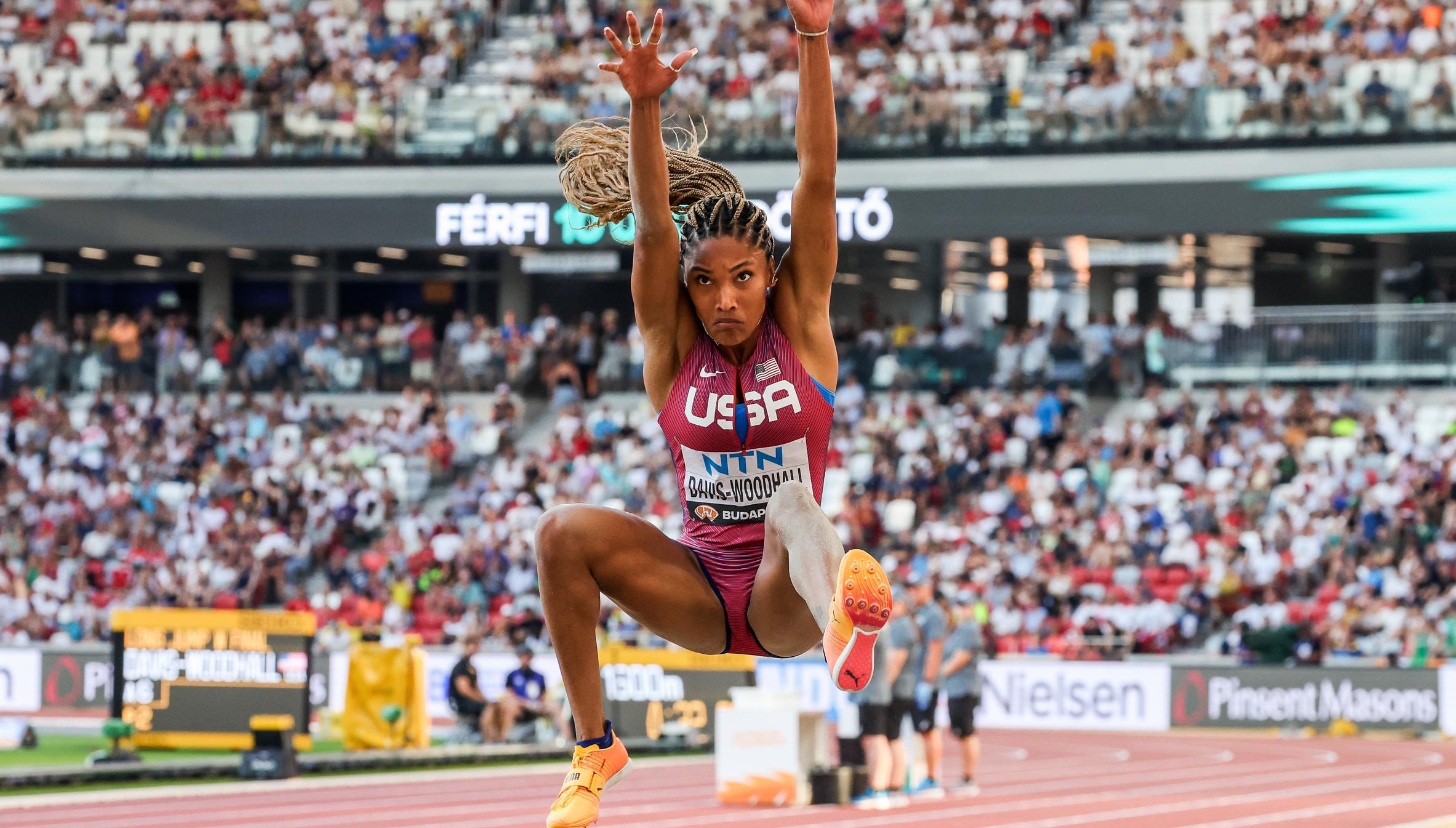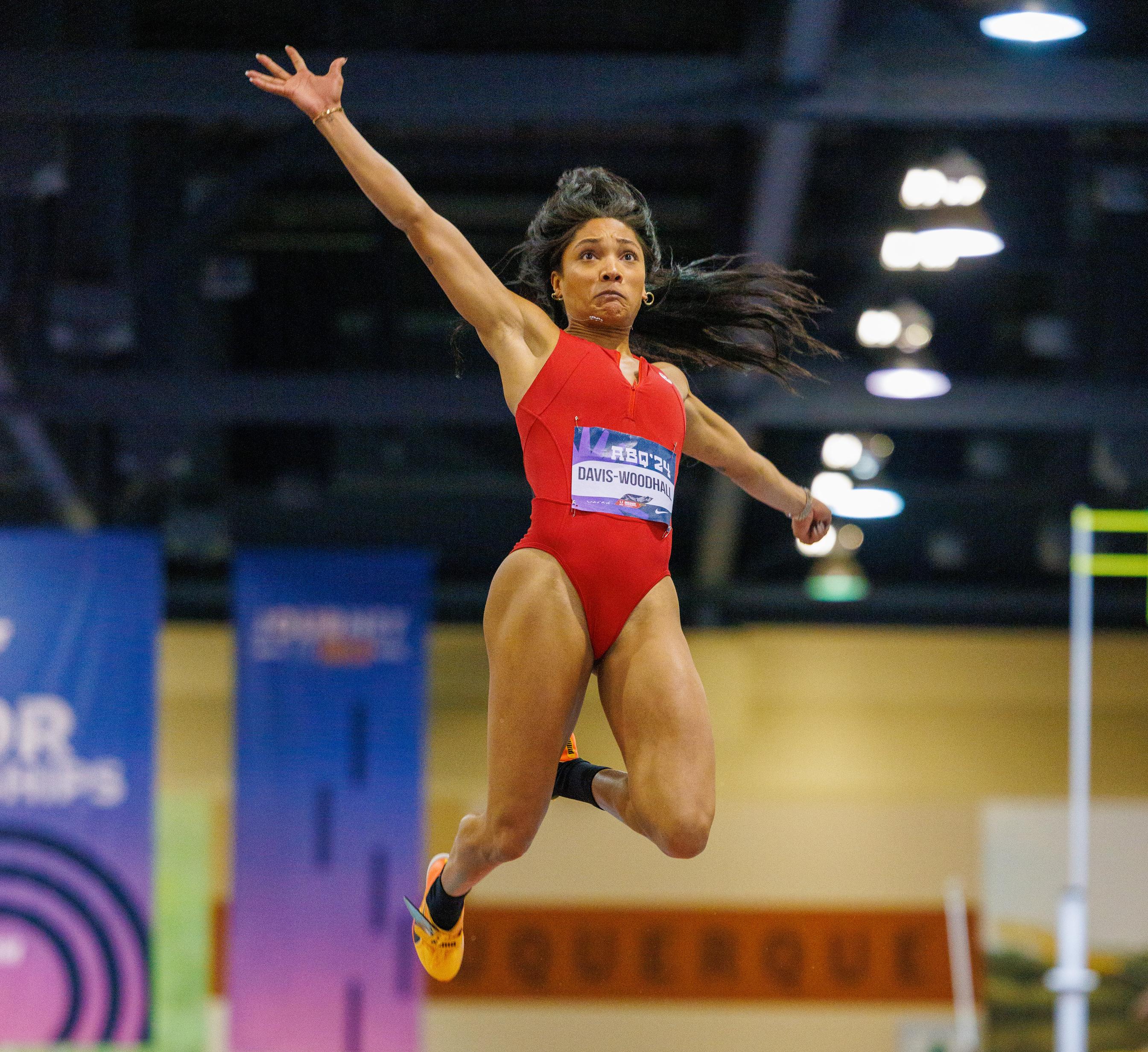By Kyle Merber
February 21, 2024
The rules for the long jump are among the simplest in all of sports. I’d hesitate to even use the plural form of rules because it is really just one rule: see how far you can jump from HERE. Well, World Athletics CEO Jon Ridgeon has shared that this beautifully straightforward event may be getting a more dumbed-down revamp soon.
The hinted at update is that rather than having a line or board that athletes must take off behind, there would instead be a legal zone. The jump would be measured from where the athlete took off, not from the board itself. The end results? Fewer fouls called than when Tim Donaghy took the under.
If your immediate reaction is, “Kyle… that means every jump will be way further!” then yes, that is true, and it’s another potential hangup. The event has been in the Olympics since 1896 (and 1948 for women) and if we have learned anything from the way old people have reacted to the super shoes, they will not like their records being broken this way.
At last year’s World Championships, a full third of all contested jumps were ultimately ruled a foul. This is obviously because of the rule that was implemented in 2023 where they put a laser at the edge of the board and if anything was sensed crossing the plane then it’d be deemed a foul. This was a constant issue because athletes were planting on the board, but then their toes were rolling over in launch.

Kevin Morris / @KevMoFoto
This big new idea therefore seems like a massive overcorrection. How about we just get rid of the stupid laser? And while we’re at it, make the boards less slippery? (I just watched an INSANE video of someone slipping and hyperextending their knee, but I squealed so loudly that I could not in good faith link to it in this newsletter. Instead, I went with Carey McLeod flying. For you psychos who grew up watching LiveLeak videos, you can go find it yourselves.)
Since World Athletics would never just add a new system of doing things on the biggest stage without testing it first (besides the repechage heats at the Olympics), there will be some local and lower-level guinea pigs to tell us how it goes. The irony is that the new technology that will be implemented to make this measurement system possible will likely be prohibitively expensive at the grass root level of the sport. Kids will be learning to jump under one system, only to learn something different if they make it as a high-level collegian or professional, where meet hosts can afford the measuring system.
The long jump is not simply about jumping the furthest. There is an element of precision, and adjustments that are made throughout the competition are a key part of it. There is a story to be told about how aggressive or conservative athletes are taking each approach, depending on where they are positioned in the field. This proposal suggests that rather than leaning into those decisions to make it more interesting to viewers, the head honchos would prefer that element be eliminated entirely.
Now while I appreciate World Athletics’ willingness to test, reevaluate, and consider different approaches to the sport, unfortunately they overstepped the board here. The issue is quite clearly with the presentation. That’s partially because there are way too many events. Take a look at this screen shot of the split screen at the US Indoor Championships. If you are a long jump fan, then it’s better than not watching the long jump at all… I think. But there’s no opportunity to dig into the plot of the competition in that format.

Johnny Pace / @PacePhoto
If the goal is to make the long jump more interesting for viewers, then get rid of the pole vault and 800m entirely, or at least don’t try to broadcast them all at the same time. Give the microphone to two athletes or coaches that know the event exceptionally well, and let them discuss launch angles, toe placement, runway speed, and more nuances, using statcast technology like you would in a game of baseball. The best example of this was Holly Bradshaw at the Mondo Classic in 2023.
If fouling really is an issue that World Athletics seeks to fix, and they are unwilling to get rid of the lasers or narrow the sport down to the 10 most popular events (KYLE’S CONTROVERSIAL OPINION ALERT), then how about having fouls shift toward a penalty? Imagine if there is a second line, six inches beyond the board. If you take off past the legal mark, but still from within that zone, then one full foot is deducted from the jumps final length. Make a little gray area!
No one is going to break any records that way, but it’s still a legal jump. I’ve never understood the resistance of track and field to penalize athletes rather than throwing them out entirely. Think of the drama at Worlds in 2011 if rather than being disqualified, Usain Bolt was forced to start five meters back in the 100m and make up that deficit. This WA proposal is like suggesting that the sport does away with reaction times and every athlete starts whenever they’d like. This ain’t the NFL combine!

Kyle Merber
After hanging up his spikes – but never his running shoes – Kyle pivoted to the media side of things, where he shares his enthusiasm, insights, and experiences with subscribers of The Lap Count newsletter, as well as viewers of CITIUS MAG live shows.




